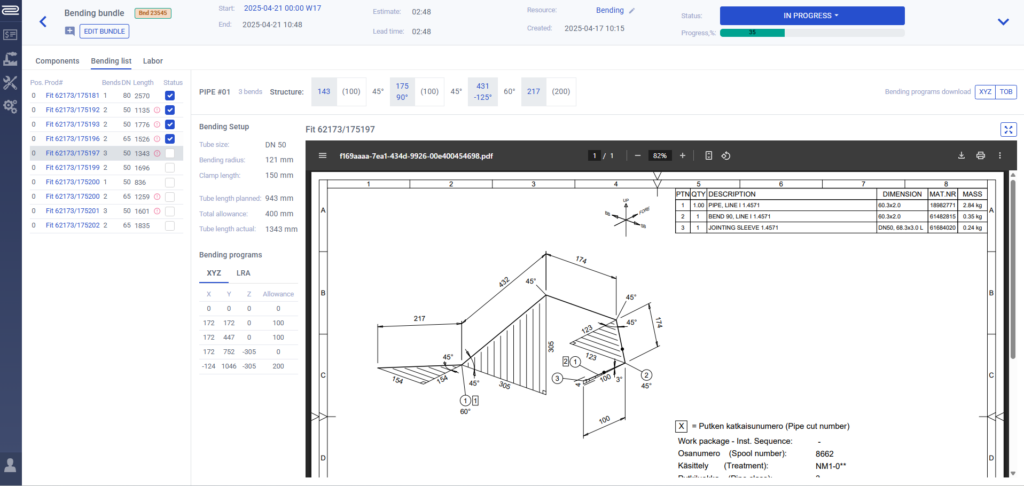Capacity planning in PipeCloud — plan ahead and balance your shop floor resources with confidence
PipeCloud’s capacity planning feature gives production planners a clear, real-time view of resource availability and workload. It allows you to plan production with precision, assign work tasks to the right stations, and ensure your shop floor operates smoothly without last-minute surprises. Whether you need to allocate tasks across cutting, fitting, welding, or any other station, capacity planning helps you see exactly what’s possible — and when.
The challenge: Uncertainty around shop floor capacity slows production
In pipe prefabrication, coordinating production without digital tools often means working with incomplete or outdated information. Planners can’t easily see how busy each station is or whether resources are underutilized or overloaded. This lack of visibility makes it harder to plan production efficiently, leading to missed deadlines, idle machines, and rushed adjustments that could have been avoided. Bottlenecks go unnoticed until they cause delays, and without clear insight into how work flows from one station to the next, teams are left to rely on manual coordination and best guesses.
Plan and assign work with clarity
PipeCloud’s capacity planning view presents this data in a calendar-style layout that shows at a glance what each resource is working on, how busy they are, and where capacity remains. As production tasks are created, the system automatically estimates the time needed based on spool complexity and shop floor data. Bundles can be assigned to the right resources, and PipeCloud can even suggest start dates that ensure work is completed in time for key milestones, such as 30 days before delivery.
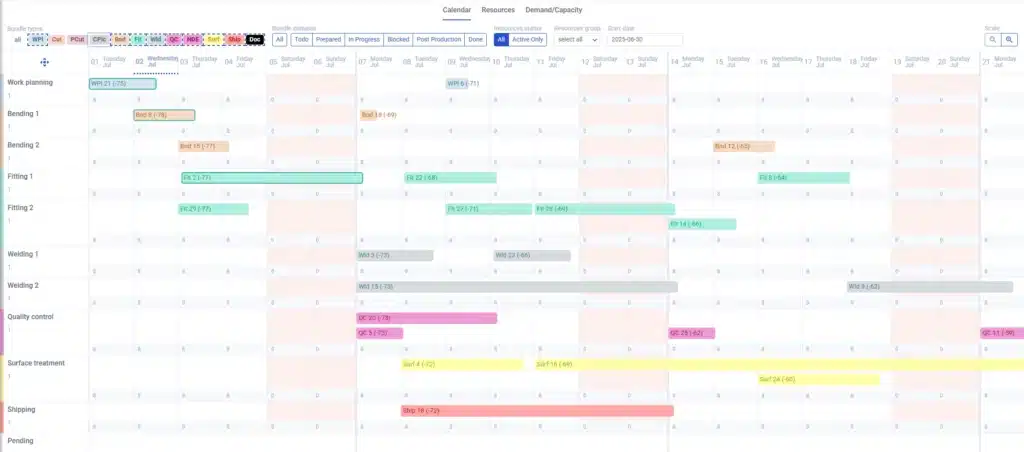
The capacity calendar makes it easier to plan ahead, balance workloads across stations, and adjust as needed to keep production moving smoothly. The capacity calendar also lets planners select a specific sales order and highlight all related work tasks. This makes it easy to follow the full production flow for the selected set of spools and ensure that each step aligns with the overall schedule.
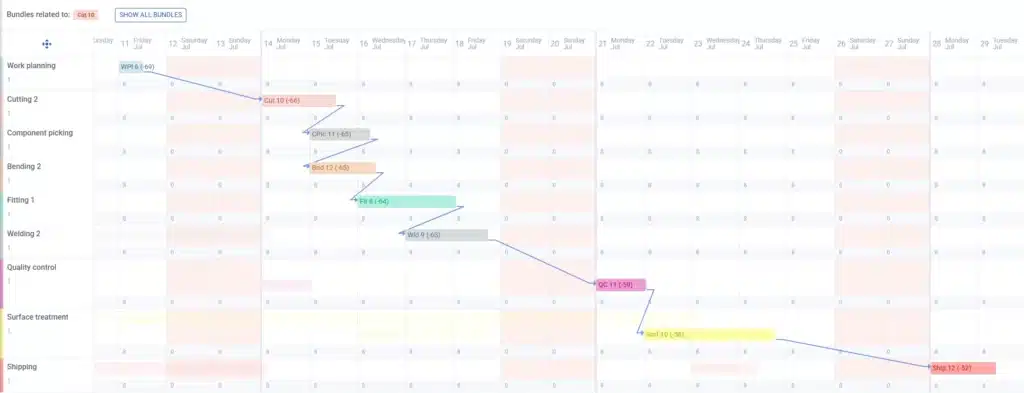
Compare demand against available capacity
The Demand/Capacity view provides a high-level overview of how current and planned work stacks up against the total capacity of each resource group. For example, planners can check how much of the welding capacity is already committed, or whether fitting stations are at risk of overload for a specified time period. This makes it possible to spot bottlenecks or underutilized resources early and adjust plans before problems arise.
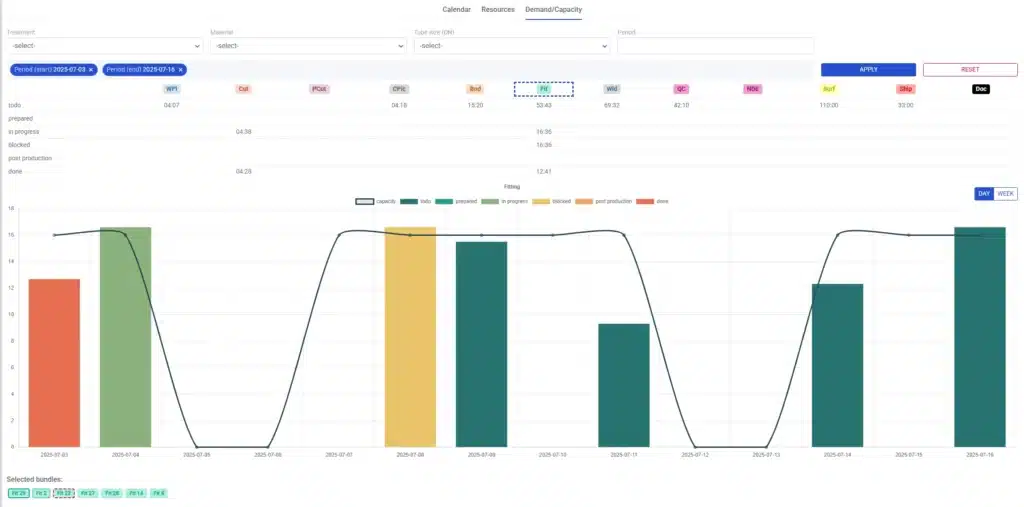
By combining these views — Resources, Capacity Planning, and Demand/Capacity — PipeCloud gives planners the tools they need to build production plans that are realistic, efficient, and easy to adjust as conditions change.
Define and manage your shop floor resources
To support accurate planning, PipeCloud’s resource setup allows planners to define the real shop floor structure. Here, you can easily create and manage resources that represent each work station or group, such as cutting tables, welding bays, or fitting teams, allowing shop floor workers to be assigned to each resource.

For machinery resources, like bending, machinery setups can easily be created for automatic bending program generation.

For each resource, it’s easy to set daily work hours, shift patterns, and exceptions like weekends or holidays. This gives the planning system the foundation it needs to calculate capacity accurately and ensures that production plans reflect reality.
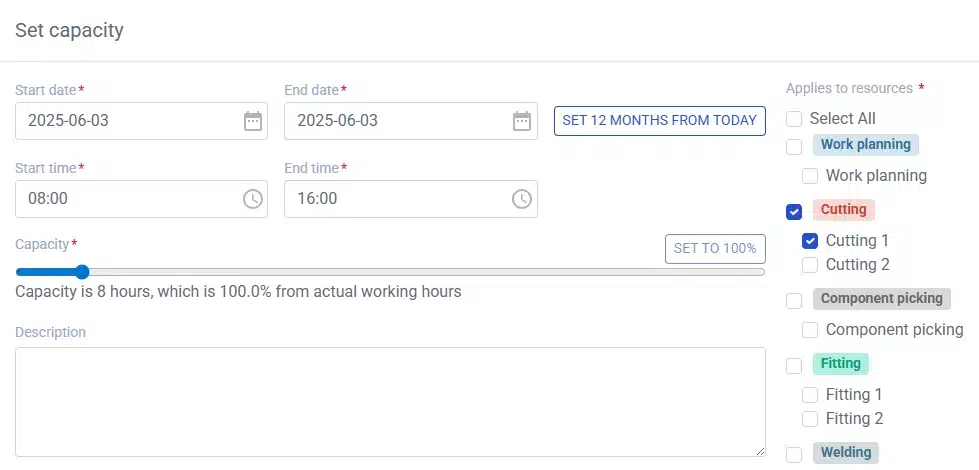
What it means in practice
Let’s say a large order comes in with tight delivery requirements. Instead of manually guessing which stations can take on the work, the planner opens the capacity calendar and immediately sees which days still have open slots for each resource — cutting, welding, fitting, or bending. If welding bays are fully booked but fitting stations have capacity, the work can be adjusted or phased accordingly. A quick check in the Demand/Capacity view shows whether overall workloads are trending toward overload in the coming weeks, allowing the team to shift priorities or bring in extra shifts before problems develop.
By using live capacity and demand data, planners can build production schedules that actually hold. This helps avoid fire drills, missed deadlines, and overtime costs while bringing predictability to a process that often feels chaotic. For day-to-day visibility into how those tasks are progressing, capacity planning is best paired with the Kanban view.
From planning to action
In practice, this means a production planner receiving a new order can immediately see if it can be delivered on time, or if production can be rescheduled. With a quick check of the capacity plan and demand overview, it’s easy to understand resource availability, coordinate just-in-time production, and make informed decisions without relying on manual coordination or gut feeling. The result is smoother operations, fewer surprises, and better use of shop floor resources.
Ready to see it in action?
Book a demo and explore how PipeCloud’s resource and capacity planning helps you balance workloads, avoid bottlenecks, and plan production with clarity.

